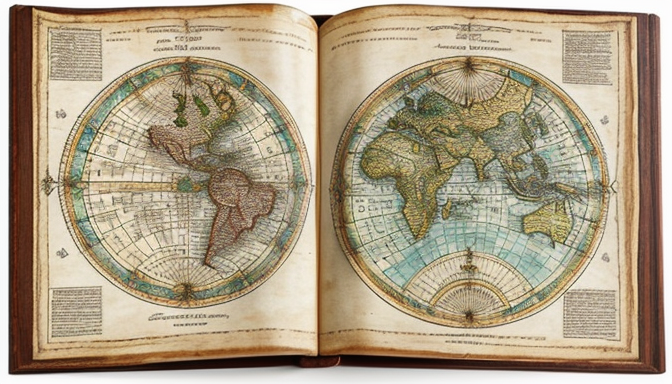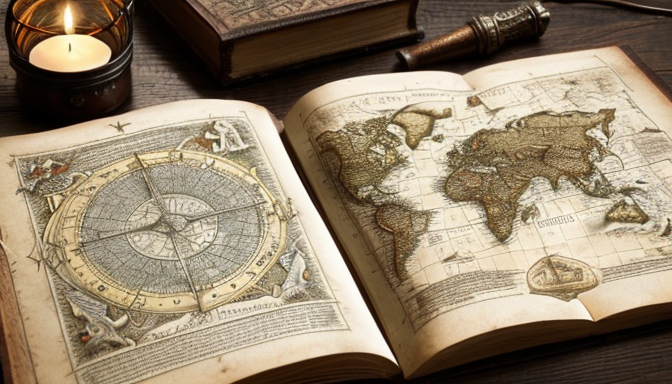Have you ever found yourself lost in the pages of a book, yearning to explore the intricate landscapes of a fictional world? Maps are the keys that unlock these realms, guiding us through fantastical lands filled with adventure and mystery. They are more than just illustrations; they are vivid portals that connect us to the heart of the story. Imagine wandering through the bustling streets of a medieval kingdom or climbing the treacherous peaks of an enchanted mountain range. Maps breathe life into these experiences, allowing us to visualize the geography and culture that shape the narrative.
When authors craft their worlds, they often design detailed maps that showcase everything from majestic castles to hidden forests. These maps serve multiple purposes, including:
- Enhancing Immersion: A well-drawn map pulls readers deeper into the narrative, making them feel like they are part of the adventure.
- Clarifying Geography: Maps help clarify the relationships between different locations, ensuring readers understand the stakes of the journey.
- Revealing Hidden Secrets: Many maps contain clues about the story’s lore, offering readers a chance to uncover hidden truths.
In essence, maps are not just decorative elements; they are vital components of world-building that enrich our understanding of fictional universes. So, the next time you dive into a new book, take a moment to appreciate the artistry behind the map. It’s a treasure trove of secrets waiting to be discovered!
The Importance of Maps in World-Building
Maps are not just pretty pictures; they are essential tools for crafting immersive fictional worlds. Imagine diving into a novel where the landscape is as vivid as the characters. A well-designed map can transport readers to fantastical realms, allowing them to visualize the intricate details of the story’s geography. When readers can see the lay of the land, they feel a deeper connection to the narrative, which enhances their overall experience.
Consider this: a map can reveal hidden secrets, such as ancient ruins or mythical locations, that might not be explicitly mentioned in the text. It acts as a visual guide, helping readers navigate through complex terrains and cultures. For example, a fantasy map might showcase various landforms like mountains, rivers, and forests, each contributing to the story’s mythos. It’s like having a treasure map that leads to not just physical locations but also to the heart of the story itself.
Furthermore, maps can delineate kingdom borders and political boundaries, adding layers of intrigue and conflict. When readers see the proximity of rival kingdoms or the vastness of uncharted territories, it sparks their imagination. They begin to wonder: What alliances are formed? What battles are fought? This visual representation makes the world feel alive and dynamic, encouraging readers to invest emotionally in the unfolding drama.
In essence, maps are the unsung heroes of world-building. They provide a framework that supports the narrative, inviting readers to explore and discover the rich tapestry of cultures, histories, and landscapes that define the story. Without them, the journey through fictional worlds would be a lot less exciting!

Types of Maps in Fictional Narratives
When diving into the realms of fictional narratives, maps become more than just decorative elements; they are the blueprints of entire worlds! Think of them as the key that unlocks the mysteries of a universe, guiding readers through the intricate tapestry of cultures, histories, and landscapes. The types of maps used in these narratives can vary widely, each serving a unique purpose that enhances the storytelling experience.
One of the most common types is the geographical map, which showcases the physical features of a world, from towering mountains to sprawling oceans. These maps help readers visualize the distances between key locations and understand the challenges characters may face on their journeys. For instance, imagine traversing a vast desert; without a map, the journey could feel endless and daunting!
Another essential type is the political map, which delineates the borders of kingdoms and realms. These maps are crucial for understanding power dynamics and conflicts within the story. They reveal alliances and rivalries, giving readers insight into the political landscape that shapes the narrative. For example, a kingdom on the brink of war may have a political map that highlights contested borders, making the tension palpable.
Finally, cultural maps can enrich the reader’s experience by showcasing the diverse communities and their unique traits within a fictional world. These maps may highlight areas known for specific traditions, languages, or even magical practices. By incorporating these various types of maps, authors can create a multi-dimensional experience that draws readers deeper into the story, making them feel as if they are part of the adventure.
Frequently Asked Questions
- Why are maps important in fictional narratives?
Maps are crucial because they provide a visual representation of the story’s world. They help readers navigate the geography, cultures, and histories, making the experience more immersive and engaging.
- What types of maps are commonly used in fiction?
Fictional narratives often utilize various types of maps, including political, cultural, and geographical maps. Each type serves a unique purpose, guiding readers through complex worlds and supporting the themes and conflicts of the story.
- How do maps enhance world-building?
Maps enhance world-building by creating a tangible connection between readers and the fictional universe. They allow readers to visualize the landscape, understand the relationships between different locations, and immerse themselves in the narrative.
- Can maps reveal hidden secrets in a story?
Absolutely! Maps can highlight hidden locations, significant landmarks, and cultural nuances that enrich the narrative. They often contain clues that deepen the reader’s understanding of the plot and character motivations.

Recent Comments